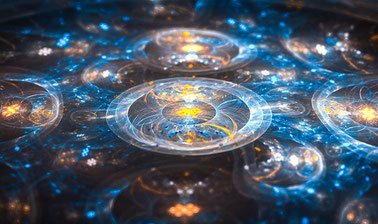Imagine waking up to a cup of coffee and a warm breakfast made by your customized robot, Alexa. As you walk out the door to go to work, your car recognizes your face and opens the door. It drives you to your destination as you sip coffee and send an email on a perfectly secure network.
Not a bad life, right?
This scenario is just one of the many possibilities that lie ahead due to new research in quantum machine learning (QML).
But what is quantum machine learning? And how does it pertain to Alexa making you coffee?
Quantum machine learning is a field of study that enhances classical machine learning with quantum mechanics. Classical machine learning is a way of analyzing data; it allows a computer to process information without being given explicit instructions on how to execute every task. Rather, the computer is programmed to recognize patterns and make inferences in order to perform the task. Current uses of machine learning are Alexa and other voice assistants, the programs for self driving cars, and facial recognition technologies. All use previous interactions to infer what they are supposed to do.
The other aspect of QML is quantum mechanics. Quantum mechanics is a physical science that can accurately describe the actions of subatomic particles and waves. There are various properties of quantum systems that are useful in QML, namely entanglement and superposition.
These two properties are vital to quantum computing since they are the underlying properties of a qubit. Unlike normal computing, which operates through binary digits (bits) that are either zeros or ones, quantum computers use quantum bits, or qubits. Qubits also use zeros and ones to process data; however, any superposition of 0 and 1 is also a valid state. Since qubits can be in a superposition of both states at the same time, they have immense computational power and can drastically reduce computation time.
The combination of machine learning and quantum computers is what gives QML the potential to produce amazing new technologies. Unlike QML, classical computing is limited. One of the major problems in advancing our robotic algorithms and scientific research capacities is that classical computers take too long to compute complex data. If quantum algorithms could be created to effectively reduce calculation time while maintaining functionality, many breakthroughs could be made.
Luckily, Professor Rupak Chatterjee is on the case.
Professor Chatterjee is a member of the Stevens Physics Department. After working on Wall Street for 15 years, he switched gears to QML and has found major success. His current research focuses on improving a classical k-means clustering algorithm by using quantum mechanics.
The first aspect of Dr. Chatterjee’s research is his work on both supervised and unsupervised machine learning algorithms. Supervised machine learning algorithms start with both a known input and output. From there, an algorithm is used to map a function that correctly predicts the output. This is called supervised learning because the correct answer can be thought of as an instructor that supervises the new algorithm. Unsupervised machine learning algorithms start with only input values. The algorithm then tries to model the data in order to learn more about the structure.
K-means clustering is a type of unsupervised algorithm. This algorithm separates the input data into groups based upon certain similarities between data points. The algorithm starts with the target number k, which refers to the number of centroids for the data. The centroid is a real or imaginary location at the center of a cluster.
Once the target number is chosen, the algorithm sorts data points by their distance from a randomly-selected centroid. After all points are associated with a centroid, the algorithm performs repetitive calculations to optimize the location of the centroid. This continues until the centroids no longer need to move and the data is completely sorted into clusters.
In Dr. Chatterjee’s research, the k-means algorithm is adjusted slightly so it uses quantum mechanics. Instead of using regular distance (also known as Euclidean distance) it applies a quantum distance formula. Then Dr. Chatterjee partnered with IBM and tested the algorithm on their quantum computer.
The results exceeded expectations!
The first major achievement from his research is that his quantum-improved algorithm was faster than a classical k-means algorithm. Since quantum computing is only in its early stages, seeing a time improvement from the algorithm shows incredible promise. The second major feat is that the quantum algorithm improved the accuracy of the clusters. This is a major feat since more accurate unsupervised algorithms can help predict answers to many open-ended questions.
These findings show that the early stages of quantum computing are providing better results than previous computing methods. By extension, QML could aid in making a faster and more accurate Alexa that could make your coffee. More practical applications would be in the fields of physics, chemistry, and biology in the hopes of modeling complex systems.
Lastly, Dr. Chatterjee’s research has helped advance physics research at Stevens. His research overlaps with other physics and computer science researchers on campus. For example, Professor Chatterjee works jointly with Professor Yuping Huang to generate and use quantum random numbers. This collaboration paves the way for new algorithms and more secure communications.
He has also created opportunities for student involvement in quantum machine learning research. In addition to fostering connections with IBM, students at Stevens have been able to assist with formulating and testing the algorithm. Kaitlin Gili, a senior Physics major, is one of the authors of the new publication.
It’s obvious that this research will do more than make your morning coffee. It has created monumental opportunities and new ideas for people all across campus. But until we have this technology to make your coffee and drive you to work, you should get yourself up and talk to Dr. Chatterjee.

Be First to Comment